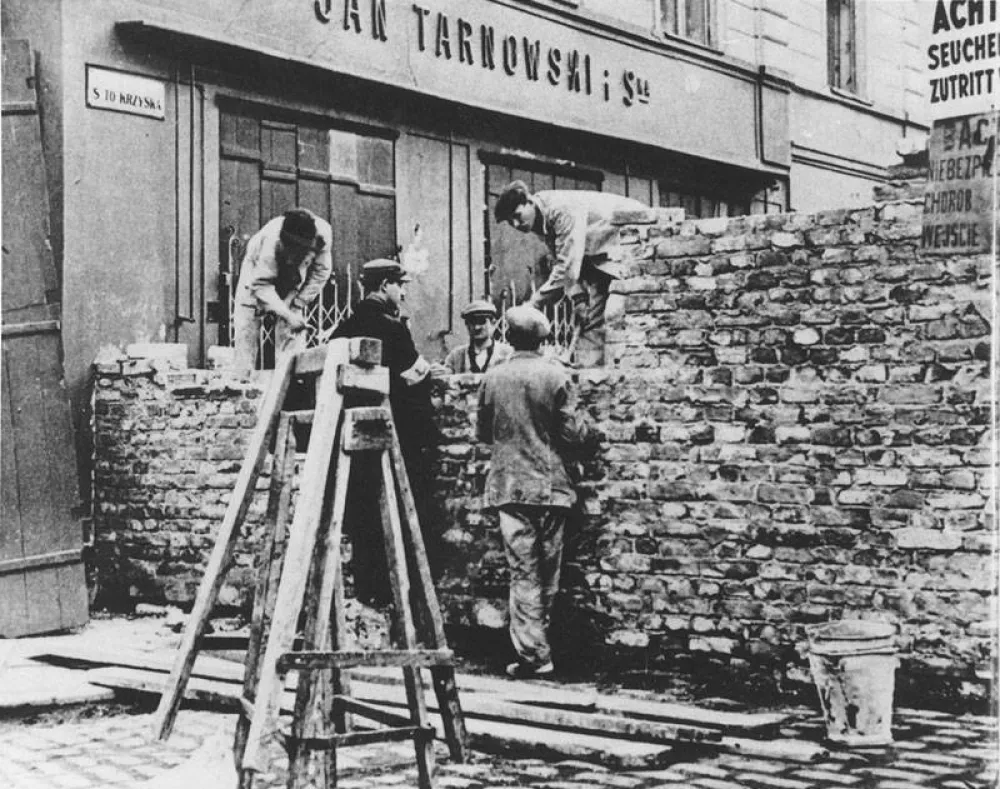close
The situation for Jews in Warsaw had been slowly worsening from the time the Germans captured the city on September 28, 1939. Initially, Jews were plucked from the streets at random for forced labor and were ostracized in their daily lives. As the city switched from Polish to German control, the Germans ordered the creation of a twenty-four member Judenrat, or Jewish Council. The Jewish Council was meant to function as a liaison between the Germans and the Jewish community but had very little power to help the Jews. This Council, headed by Adam Czerniakow, would later become the central Jewish authority in the Warsaw ghetto, where it was tasked with implementing German orders. In November 1939, after the Germans established a series of anti-Jewish laws, including the law stating that Jews must wear a white armband with a star of David. It was clear that the Jews of Warsaw would be targeted for persecution.
Shortly after these anti-Jewish laws were implemented the Germans decided to concentrate Jews into one area of the city. While official plans for a Jewish ghetto did not take shape until 1940, Jews were shunned by the population and stigmatized by both the anti-Jewish laws as well as other measures the Germans implemented. This included putting up warnings of disease and contamination on the perimeter of the Jewish section of the city. These signs foreshadowed the closing off of this area, and in March 1940 construction to enclosed this area of the city with walls started. Thus began the creation of what would become the Warsaw ghetto.
After the official declaration of the ghetto on October 12, 1940, which was Yom Kippur, all Jews of the city were given three weeks to move into the ghetto. Jews were forced to move in haste and brought only those possessions they could carry and fit into their new, much smaller living quarters. The boundaries of the ghetto were far too small to contain the more than 350,000 Jews forced into the ghetto – the space was a mere 3.5 square kilometers (1.3 square miles). Most Jews assumed that they would be able to retrieve their belongings at a later time. This, however, proved to be a false assumption; to the horror of the Jews of Warsaw, they were confined to this small space when the ghetto was sealed on November 16, 1940. The walls of the ghetto were difficult to penetrate for most Jews, with few gates for entrance and exist and shards of broken glass lined the tops of the ghetto walls.
This confinement was a definitive turning point for the fate of Warsaw Jews. Their lives became completely controlled by the Germans and limited by the walls of the ghetto. The sealing of the ghetto happened just over a year after German occupation; the vibrant Jewish life of Warsaw, which had thrived in the city for hundreds of years, unraveled in a relatively short period of time. The sealing of the Warsaw ghetto in many ways represented the beginning of the end for the Jews of Warsaw. The Jews, once a cosmopolitan group in Warsaw and part of the mosaic of the city, were now deprived of their home city.
